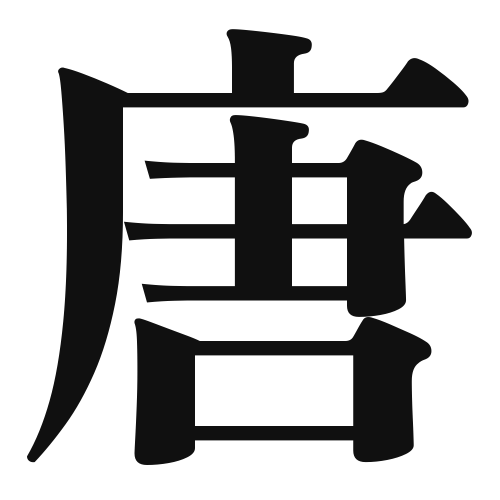1. Overview of Meaning
The kanji “唐” (pronounced “tō” in Japanese) primarily means “Tang,” referring to the Tang Dynasty of China. It is often associated with things that are Chinese or related to Chinese culture.
2. Formation and Radical
The kanji “唐” is a phonetic-ideographic character, which means it combines both sound and meaning elements. The character is composed of the radical 十 (meaning “ten”) and the phonetic component 夭 (which contributes to its pronunciation).
3. Examples of Usage
Common words and phrases that include “唐” are:
- 唐代 (Tōdai) – Tang Dynasty
- 唐詩 (Tōshi) – Tang poetry
Example sentence in daily conversation:
「彼は唐詩が好きです。」 (Kare wa Tōshi ga suki desu.) – “He likes Tang poetry.”
4. Synonyms and Antonyms
Similar kanji with related meanings include:
- 中 (naka) – meaning “middle” or “center,” which can refer to the central aspect of culture.
Antonyms include:
- 西 (nishi) – meaning “west,” which can refer to Western culture, contrasting with the Eastern connotation of “唐.”
5. Cultural and Historical Background
The kanji “唐” has significant ties to Japanese culture, especially in the context of historical exchanges with China. It is often used in proverbs and idiomatic expressions, such as:
- 唐突 (tōtotsu) – meaning “sudden” or “abrupt,” reflecting the influence of the Tang Dynasty on Japanese language and culture.
Overall, “唐” serves as a bridge between Chinese and Japanese cultural heritage.
